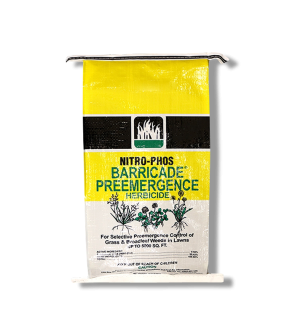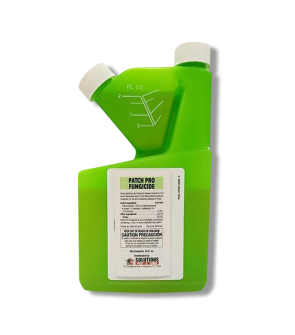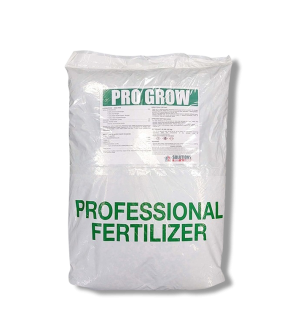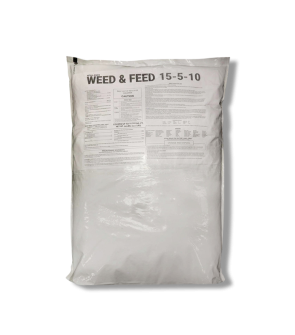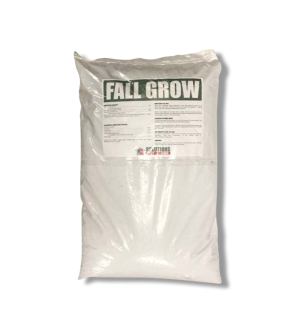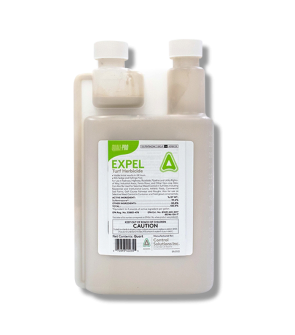Gain access to personalized product screening, the best pricing, rewards, and more!
Most Effective Products
How to Fix Neglected, Weed-Ridden Lawns
This article is a general DIY guide to help repair ugly lawns filled with weeds and patches. Using the recommended lawn care products and steps listed throughout this page can control weeds and improve the appearance of your home's lawn.
New or current homeowners can agree that yards are an integral part of the home's landscape. They provide a setting for entertaining pets, friends, and family members and increase the aesthetic appearance of your home with trees and ornamentals. Well-cared-for landscapes also increase the value of your home and property.
Despite their small size, broadleaf and grassy weeds such as clovers, dandelions, or crabgrass can quickly lower the quality of your lawn and home's value. Once you spot one of these weeds in your turfgrass, you are bound to see more. Broadleaf and grassy weeds continue to multiply until all nutrients, moisture, and space in your lawn are taken, making them a large, unattractive problem.
Whether you are just purchasing your property or trying to control your current yard from weeds, bare patches, or diseases, it can be done. Unfortunately, successful lawn management takes several weeks to repair or possibly years, depending on the amount of weeds and the health of the turf. Breaking the cycle of weeds and disease in your lawn to increase its health can be done by following the steps and products suggested throughout this DIY Guide.
What Kind of Grass Does Your Lawn Have
Before you repair your ugly, weed-ridden lawn, you will need to know what type of grass it is compiled with.
There are two different types of turfgrasses: cool-seasoned turfgrass and warm-seasoned turfgrasses.
Depending on your turf type will help determine which herbicides and pesticide material can be used as well as when to apply these products.
Cool-Seasoned Grasses:
Homeowners in the northern United States usually have cool-seasoned turf such as Kentucky Bluegrass, Annual Ryegrass, Perennial Ryegrass, Fescue, or Bentgrass.
These turfs grow in cooler environments with temperatures between 65 and 75 degrees Fahrenheit. If the weather is cool and not warm, cool-seasoned turf should be treated in the early fall or spring.
Warm-Seasoned Grasses:
Lawns along the southern half of the United States consist of warm-seasoned turf like St. Augustine grass, Bahiagrass, Bermudagrass, Zoysiagrass, Buffalograss, or Carpetgrass.
These types of grasses have a shorter growing season, meaning they reach maturity usually by mid-spring.
Depending on the weather, warm-seasoned turf can be treated from mid-February to late August. Unlike cool-seasoned turf, this type grows best in warm and humid temperatures up to 90 degrees Fahrenheit.
How to Fix An Ugly Lawn Filled with Weeds
Even though weeds are considered a nuisance, they are plants just like turf, with the exception that they are more harmful than beneficial. That is, they continue to become as thick as regular turfgrass until the entire lawn is covered.
The best way to make your lawn a lush, green appearance again is to make it difficult for the weed to grow and remove conditions allowing it to thrive. Herbicides designed as a pre-emergent or post-emergent would be best to control weeds. Pre-emergent herbicides are chemical products that stop weeds from germinating underneath the soil, sprouting, or emerging from the soil. Post-emergent herbicides are chemical products that work to travel through emerging weeds, leaves, or roots.
Step 1: Test Your Soil
When caring for new or established lawns, it would be best to test the soil. A soil test will give you information on your soil texture, pH, moisture, and nutrient levels.
Knowing these levels will help determine what type and amount of fertilizer is needed for your lawn. It will also help determine any underlying disease within your turf that may not be present at the time.
Step 2: Remove Weed and Fungi
Examine your lawn to determine which specific broadleaf weed, grassy weed, fungi, or disease is present. Since pesticides are made to target certain weeds, fungi, or diseases, you will need to determine what's infesting your turfgrass. Once you have determined the weed type and its stage of growth, you can choose the most appropriate treatment plan.
For established weeds, use a post-emergent herbicide labeled to be used on your turf type and for the specific weed. We recommend using a post-emergent herbicide like Expel Turf Herbicide, which treats over 50 types of grass and broadleaf weeds in cool-seasoned and warm-seasoned turf.
You will want to use a systemic fungicide like Patch Pro Fungicide for general fungi and disease control on lawns. This emulsifiable concentrate, formulated with the active ingredient propiconazole 14.3%, controls a broad spectrum of diseases, such as brown patch, powdery mildew, and blights.
Measure the square footage of your treatment area to determine how much pesticide material to use. To do this, measure the length and width of the treatment site in feet and multiply by (length X width = square footage). To find acreage, divide the square footage by one acre (square footage / 43,560 sq. ft. = acres).
Expel Turf Herbicide and Patch Pro Fungicide must be mixed with water before application, which requires tools such as a professional spray rig for application to turfgrass.
Applications of Expel Turf Herbicide will depend on the type of grass your lawn has.
For cool-seasoned grasses, apply 4 to 8 fl. oz. of Expel Turf Herbicide per 10 gallons of water per acre.
For warm-seasoned grasses, use 8 to 12 fl. oz. of Expel Turf Herbicide per 10 gallons of water per acre.
Depending on the disease, you will want to use 0.5 to 4.0 fl. oz. of Patch Pro Fungicide per 1 gallon of water per 1,000 sq. ft. of treatment area. Be sure to check the product label for the correct application rate to treat the disease or fungus you are targeting.
Step 3: Reseed Lawns
Insects, weather, and lack of general lawn maintenance can stress turfgrass, causing it to thin to the point of being bare. If your lawn looks worn or has small bare patches, then it may be time to seed it.
When planning for newly seeded lawns, you must know that warm-seasoned turf seeds must be planted in the second half of spring when temperatures are warm to late summer (July). The best time to plant seeds for cool-seasoned turf is in the fall, which is usually the second half of August to the first half of October.
Spread the grass seeds evenly across the bare parts of the turf by hand or with a hand spreader. For large bare patches or thinning turf, you will need to use a push or broadcast spreader.
Wait until 30 to 45 days before proceeding with pesticide treatments and mowing.
Step 4: Fertilizing to Maintain Turf Color and Strength
Most homeowners assume that the lawn will repair itself with the season, except when there have been consistent fungi, diseases, or weeds. If your lawn does not have the right amount of nutrients during the season, and it's combating the previously mentioned conditions, then it won't grow healthy. Typically, it will look discolored, thin, or have bare patches.
When these afflictions have been removed, you can recover your turfgrass's color and density by providing nutrients in the form of fertilizer. However, you will need to feed your turfgrass with the right amount of nutrients and fertilizer for that season.
For spring applications, consider Solutions 15-5-10 Weed & Feed Fertilizer with Trimec. In most treatments, you will apply 3.2 to 4 lbs. of product per 1,000 sq. ft. of treatment area.
In summer, check out Solutions Pro Grow Summer Blend 19-4-10 Fertilizer. This is a 19-4-10 fertilizer; you will apply 5 lbs. of product per 1,000 sq. ft.
During the fall, consider Solutions 8-12-16 Fall Grow Fertilizer. This is an 8-12-16 fertilizer blend, and you will use 5 lbs. of product per 1,000 sq. ft.
With these granular fertilizers, you must use a push or broadcast spreader to broadcast the material across your treatment area. Load the measured amount of fertilizer into a calibrated spreader and broadcast half of your granules in parallel lines once across the area. Then, broadcast the other half of the measured fertilizer at a perpendicular angle to cover the entire area. Be sure to walk even to spread the fertilizer material evenly across your lawn.
Once the fertilizer has been applied, you must water it to activate the material.
Step 5: Mow Your Lawn Regularly
Now that everything has been cleared and removed, you can begin to mow your turf. This will help immediately control your lawn's appearance and encourage new grass growth to improve its density.
When it comes to mowing your lawn, a general rule is to avoid cutting 1/3 of your turf to prevent scalping issues. When the grass reaches 3 inches in height, it's time for a trim.
Depending on the season, mowing should be continued until the lawn is covered with frost or snow.
Key Takeaways
When is the Best Time To Repair Lawns
- The best time to start repairing your neglected lawn is during the early fall or spring, depending on its turf type. If reseeding is needed for thin, bare patches in your yard, then you will need to plant warm-seasoned grass seeds in the second half of spring, when the weather is warmer, and in late summer (July). Cool-seasoned grass seeds will be in the fall (second half of August to the first half of October) when the soil is still relatively warm from summer.
How Long Does It Take to Repair Damaged, Ugly Lawns
- Full control of a lawn's appearance after overgrowth, weeds, and other afflictions will determine its regrowth success. Depending on the treatment and health of the lawn, it can take several weeks to even years before the lawn is lush and green again.
How to Repair A Lawn Full of Weeds
- We recommend making a post-emergent application with Expel Turf Herbicide, which kills over 50 types of broadleaf and grassy weeds in cool and warm-seasoned turf. If weeds are non-existent during spring, you can use Solutions 15-5-10 Weed & Feed Fertilizer with Trimec, which functions as a pre-emergent herbicide and fertilizer.













